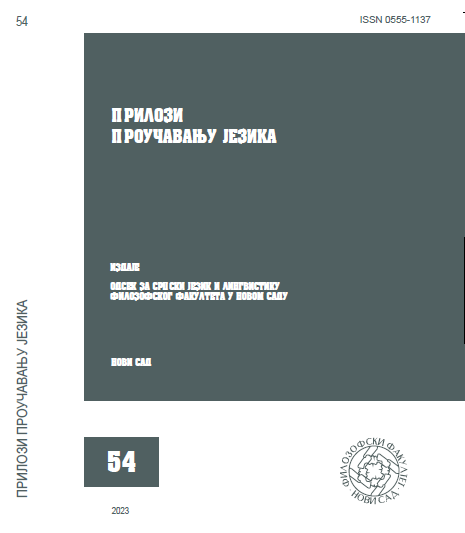О појму судбине у српском језику из појмовнометафоричког угла
On the concept of destiny in the Serbian language: A perspective from the conceptual metaphor theory
Author(s): Branislav VeselinovićSubject(s): Language studies, Language and Literature Studies, Theoretical Linguistics, Semantics, Cognitive linguistics, South Slavic Languages, Philology
Published by: Филозофски факултет, Универзитет у Новом Саду
Keywords: conceptualization; conceptual metaphor; source and target domains; mental frame; metaphoric system; unconventional conceptual metaphor; language picture of the world; dynamics of categorization; desti
Summary/Abstract: In this paper we examine the conceptualization of sudbina (destiny) in the contemporary Serbian language with the aim to establish which source domains are relevant in its metaphoric conceptualization, and consequently determine the mental frame binding the domains together. Additionally, we ascertain conventional and unconventional conceptual metaphors regarding the concept. The examples excerpted from the Digital Corpus of the Contemporary Serbian Language (DCSL) were analyzed by using the conceptual method based on the contemporary theory of metaphor. The task of the research is the statistical analysis on the centre of the target domain, i.e. his prototype in the contemporary Serbian language, along with the classification of excerpted examples according to the scale of abstractions. What’s more, the task is to discover how much the concept of destiny is constant in the Serbian language picture of the world in comparison to the sources from historical and dialect dictionaries and the examples of proverbs and verses from oral epic poetry. The analysis has shown that, in accordance with the personification of destiny in the Serbian traditional beliefs, the most frequent conceptual metaphor is DESTINY IS HUMAN, as well as that the entire mental frame conceptualizing destiny is connected with universal categories in the human mind, presented by two metaphoric systems – Great Chain of Being and Event Structure, together with their possible blending. Also, unconventional metaphors, reaching even to fifth or sixth level of hyponymy, are most frequent in the belletristic functional style, albeit they are possible in others. Furthermore, it is shown that the given conceptual frame is stabile throughout space and time and that the concept of destiny is deeply embedded in the Serbian culture, which is reflected in certain typical metaphoric images and significant presence of source domains such as TEXT and PICTURE.
Journal: Прилози проучавању језика
- Issue Year: 2023
- Issue No: 54
- Page Range: 113-156
- Page Count: 43
- Language: Serbian

